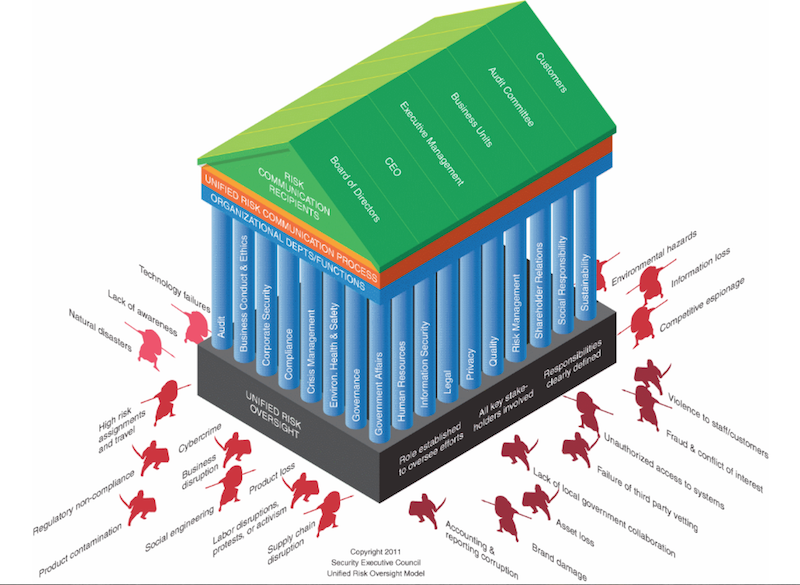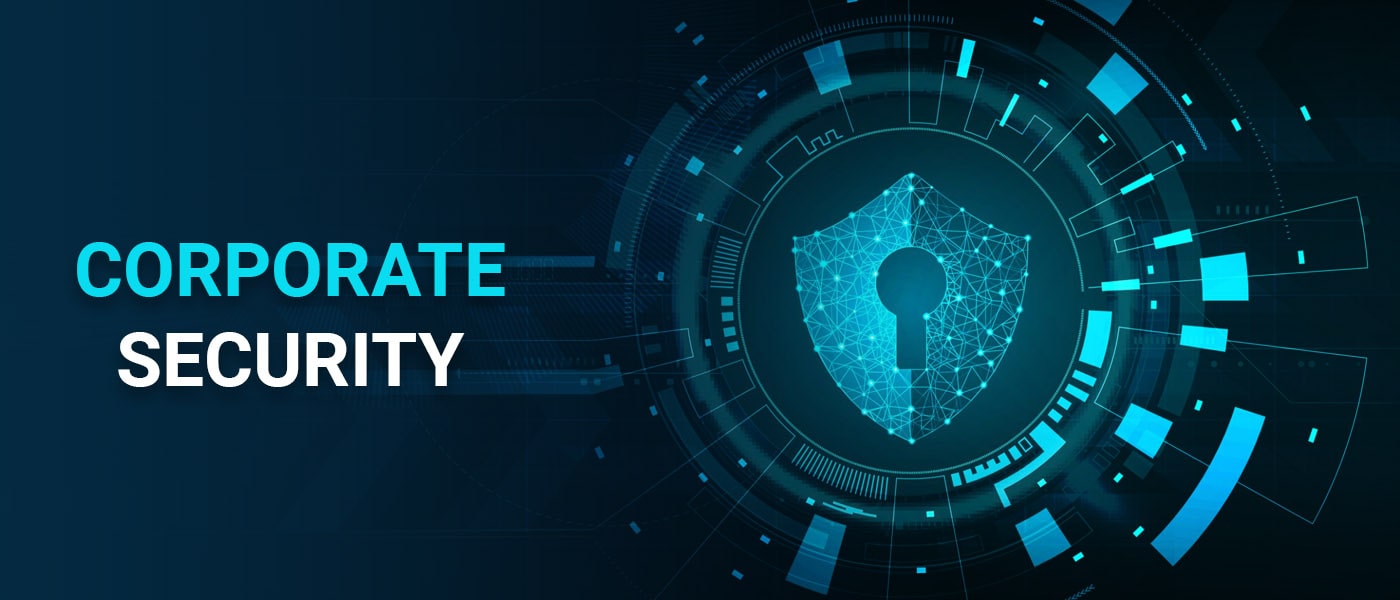Securing Your Organization: Corporate Security Fundamentals Unveiled
Wiki Article
From Cybersecurity to Physical Measures: Reinforcing Business Security in a Transforming World
In today's swiftly progressing electronic landscape, the value of corporate protection can not be overstated. As cyber dangers become significantly sophisticated and widespread, organizations must surpass typical cybersecurity steps to guard their operations and properties - corporate security. This is where the combination of physical safety procedures becomes important. By integrating the strengths of both cybersecurity and physical safety, firms can develop an extensive protection approach that deals with the varied range of risks they encounter. In this conversation, we will certainly explore the altering danger landscape, the demand to integrate cybersecurity and physical protection, the implementation of multi-factor authentication steps, the value of staff member recognition and training, and the adjustment of security actions for remote labor forces. By examining these essential locations, we will certainly acquire valuable insights into how companies can enhance their business protection in an ever-changing world.Understanding the Transforming Threat Landscape
The progressing nature of the contemporary globe requires an extensive understanding of the altering threat landscape for reliable corporate protection. In today's electronic and interconnected age, threats to company safety and security have actually ended up being more intricate and sophisticated. As modern technology breakthroughs and organizations end up being progressively dependent on digital infrastructure, the capacity for cyberattacks, information breaches, and other security violations has substantially increased. It is important for companies to stay notified and adapt their protection gauges to address these progressing threats.One trick aspect of comprehending the transforming threat landscape is recognizing the different kinds of risks that organizations encounter. Cybercriminals are constantly establishing brand-new strategies to manipulate susceptabilities in computer systems and networks. These risks can vary from malware and ransomware assaults to phishing frauds and social engineering methods. Additionally, physical dangers such as burglary, criminal damage, and corporate espionage continue to be widespread concerns for services.
Tracking and assessing the risk landscape is necessary in order to recognize prospective risks and vulnerabilities. This includes staying upgraded on the most up to date cybersecurity trends, assessing danger intelligence reports, and carrying out routine danger assessments. By understanding the altering risk landscape, organizations can proactively execute ideal protection procedures to mitigate dangers and protect their assets, credibility, and stakeholders.
Integrating Cybersecurity and Physical Safety
Integrating cybersecurity and physical protection is essential for comprehensive company defense in today's digital and interconnected landscape. As companies increasingly rely upon technology and interconnected systems, the borders in between physical and cyber risks are coming to be obscured. To effectively safeguard against these threats, an all natural method that combines both cybersecurity and physical security measures is essential.Cybersecurity concentrates on shielding electronic possessions, such as systems, networks, and data, from unauthorized access, disruption, and theft. Physical protection, on the various other hand, includes actions to secure physical assets, individuals, and facilities from susceptabilities and threats. By incorporating these two domains, organizations can resolve susceptabilities and risks from both electronic and physical angles, thereby boosting their general security pose.
The integration of these two disciplines permits a much more detailed understanding of safety and security risks and enables a unified reaction to incidents. As an example, physical gain access to controls can be improved by integrating them with cybersecurity protocols, such as two-factor authentication or biometric identification. Cybersecurity actions can be complemented by physical safety and security procedures, such as security cams, alarms, and protected gain access to factors.

Implementing Multi-Factor Verification Measures
As companies progressively prioritize extensive protection actions, one reliable technique is the application of multi-factor verification steps. Multi-factor authentication (MFA) is a safety method that calls for customers to supply several kinds of identification to access a system or application. This technique includes an extra layer of protection by incorporating something the user understands, such as a password, with something they have, like a fingerprint or a protection token.By implementing MFA, companies can considerably boost their safety stance - corporate security. Standard password-based verification has its constraints, as passwords can be conveniently endangered or failed to remember. MFA reduces these dangers by adding an extra authentication element, making it a lot more tough for unauthorized people to gain access to delicate information
There are a number of types of multi-factor authentication techniques offered, including biometric authentication, SMS-based confirmation codes, and equipment tokens. Organizations need to analyze their specific demands and select the most proper MFA service for their requirements.
However, the implementation of MFA should be thoroughly planned and executed. It is essential to strike an equilibrium between safety and security and use to stop individual disappointment and resistance. Organizations needs to additionally consider potential compatibility issues and supply ample training and assistance to make sure a smooth change.
Enhancing Employee Understanding and Training
To enhance company safety, organizations need to prioritize improving staff member understanding and training. In today's rapidly developing hazard landscape, employees play a vital role in securing an organization's sensitive info and possessions. However, many protection violations occur due to human mistake or lack of understanding. For that reason, companies require to buy detailed training programs to enlighten their workers regarding potential risks and the very best techniques for reducing them.Efficient worker recognition and training programs Recommended Site need to cover a variety of subjects, including information protection, phishing strikes, social design, password hygiene, and physical safety and security measures. These programs need to be customized to the certain requirements and duties of various staff member roles within the company. Normal training sessions, simulations, and workshops can help workers view create the necessary abilities and understanding to respond and identify to protection threats effectively.
Moreover, organizations should encourage a culture of protection understanding and provide continuous updates and reminders to keep employees notified regarding the most up to date hazards and mitigation methods. This can be done via interior communication channels, such as e-newsletters, intranet portals, and email campaigns. By cultivating a security-conscious workforce, companies can significantly minimize the chance of protection cases and safeguard their important assets from unapproved access or concession.

Adapting Protection Procedures for Remote Labor Force
Adapting company protection procedures to fit a remote workforce is important in making sure the defense of sensitive details and assets (corporate security). With the boosting fad of remote job, organizations should implement proper safety and security measures to reduce the dangers associated with this brand-new means of workingOne critical aspect of adapting safety and security procedures for remote job is developing safe communication channels. Encrypted messaging platforms and virtual private networks (VPNs) can aid protect sensitive information and prevent unapproved accessibility. In addition, companies need to apply using strong passwords and multi-factor authentication to enhance the safety and security of remote access.
Another vital factor to consider is the application of safe remote accessibility options. This includes offering employees with safe and secure accessibility to business sources and information with virtual desktop computer facilities (VDI), remote desktop computer methods (RDP), or cloud-based remedies. These innovations guarantee that delicate info remains protected while enabling workers to perform their duties effectively.

Last but not least, comprehensive safety recognition training is crucial for remote staff members. Educating sessions need to cover ideal practices for securely accessing and dealing with sensitive info, determining and reporting phishing efforts, and preserving the general cybersecurity hygiene.
Final Thought
In conclusion, as the hazard landscape proceeds to develop, it is crucial More Help for organizations to reinforce their safety measures both in the cyber and physical domain names. Integrating cybersecurity and physical security, carrying out multi-factor authentication measures, and improving employee recognition and training are essential steps towards achieving robust business safety and security.In this conversation, we will certainly check out the changing hazard landscape, the demand to incorporate cybersecurity and physical security, the application of multi-factor verification steps, the value of employee recognition and training, and the adaptation of protection steps for remote labor forces. Cybersecurity procedures can be complemented by physical safety steps, such as security video cameras, alarm systems, and secure gain access to factors.
As organizations significantly focus on extensive protection actions, one reliable technique is the application of multi-factor verification actions.In final thought, as the threat landscape continues to progress, it is crucial for organizations to strengthen their safety gauges both in the cyber and physical domains. Integrating cybersecurity and physical safety, applying multi-factor verification measures, and enhancing worker understanding and training are crucial actions in the direction of achieving robust corporate protection.
Report this wiki page